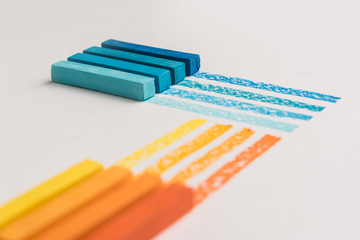Browse
Agri Food Systems
Opportunity with Udemy link
https://www.udemy.com/join/login-popup/?next=/course/postman-the-complete-guide/learn/lecture/13883208%3Fstart%3D0#overview
By:
Anne miller New vijayalaxmi santosh mhetre mali
Friday, Aug 29, 2025
AGRI-FOOD SYSTEMS
+1
No Preview Available
Leave a comment
Opportunity YT video URL via insert media
By:
Anne miller New vijayalaxmi santosh mhetre mali
Friday, Aug 29, 2025
AGRI-FOOD SYSTEMS
+1
Leave a comment
Opportunity with link
https://bw.usembassy.gov/funding-opportunities/#F/Bright
By:
Anne miller New vijayalaxmi santosh mhetre mali
Friday, Aug 29, 2025
AGRI-FOOD SYSTEMS
+2
No Preview Available
Leave a comment
Alliance for African Partnership (AAP), a consortium of ten leading African universities, Michigan S
https://aap.isp.msu.edu/news_article/23783
By:
Anne miller New vijayalaxmi santosh mhetre mali
Friday, Aug 29, 2025
AGRI-FOOD SYSTEMS
+7
No Preview Available
Leave a comment
As nations continue to come to terms with coping and finding solutions to the challenges that have b
https://aap.isp.msu.edu/engage/aap-public-dialogue-series/2020/
By:
Anne miller New vijayalaxmi santosh mhetre mali
Friday, Aug 29, 2025
AGRI-FOOD SYSTEMS
+2
No Preview Available
Leave a comment
Screen Size, Resolution, and Viewport: What does it all mean?
When you buy a device, you will often see both screen size and resolution listed in the specs. The screensize is the physical measurement diagonally of the screen in inches. This is not to be confused with the resolution, which is the number of pixels on the screen often displayed as a width by height (i.e. 1024×768). Because devices with the same screen size can have very different resolutions, developers use viewports when they’re creating mobile friendly pages. Viewports are scaled down versions of resolutions that allows sites to be viewed more consistently across different devices. Viewports are often more standardized and smaller than resolution sizes.
While desktop and laptop displays are in landscape orientation (wider than tall), many mobile devices can be rotated to show websites in both landscape and portrait (taller than wide) orientations. This means that designers and developers must design for these differences.
Need help determining if your website is responsive? Use our free MG tool, Responsive Design Checker.
While desktop and laptop displays are in landscape orientation (wider than tall), many mobile devices can be rotated to show websites in both landscape and portrait (taller than wide) orientations. This means that designers and developers must design for these differences.
By:
Anne miller New vijayalaxmi santosh mhetre mali
Monday, Aug 25, 2025
AGRI-FOOD SYSTEMS
+7

No Preview Available
Leave a comment
Numerous studies have found that positive results occur when the major stakeholders in a students
two major settings in the child's life. Common rewards, reinforcement strategies, and language help to promote consistency across settings.
Bos et al. (1999) reported that collaborative partnerships between home and school were especially important during the initial assessment of the child's disability and educational needs, the development of behav
By:
Jessica
Wednesday, Mar 19, 2025
AGRI-FOOD SYSTEMS
+2

AGRI-FOOD SYSTEMS
+7
Friday, Mar 7, 2025

Leave a comment
The 5 steps of the iterative process, The iterative process can help you during the lifecycle of a p
1. Planning and requirements
During this step in the iterative process, you will define your project plan and align on your overall project objectives. This is the stage where you will outline any hard requirements—things that must happen in order for your project to succeed. Without this step, you run the risk of iterating but not hitting your goals.
2. Analysis and design
During this step, you and your team will focus on the business needs and technical requirements of your project. If step one was the process of outlining your goals, step two is when you brainstorm a design that will help you ultimately hit those goals.
Manage Agile teams with Asana
3. Implementation
During the third step, your team will create the first iteration of your project deliverable. This iteration will be informed by your analysis and design, and should work to hit your ultimate project objective. The level of detail and time you spend on this iteration will depend on the project.
4. Testing
Now that you have an iteration, you will test it in whatever way makes the most sense. If you’re working on an improvement to a web page, for example, you might want to A/B test it against your current web page. If you’re creating a new product or feature, consider doing usability testing with a set of potential customers.
In addition to testing, you should also check in with your project stakeholders. Ask them to weigh in on the iteration, and provide any feedback.
Read: What is the Plan-Do-Check-Act (PDCA) cycle?
5. Evaluation and review
After testing, your team will evaluate the success of the iteration and align on anything that needs to change. Does this iteration achieve your project objectives? Why, or why not? If something needs to change, you can restart the iterative process by going back to step two to create the next iteration. Keep in mind that your initial planning and goals should remain the same for all iterations. Continue building upon the previous iteration until you get to a deliverable you’re happy with.
If you restart the iterative process, make sure everyone is still aligned on your project goals. The iterative process can take weeks or months, depending on how many iterations you run through. Centering your iteration on your project objectives every time you restart the iterative process can help you ensure you don't lose track of your north star.
By:
Vijayalaxmi Santosh Mhetre
Thursday, Nov 7, 2024
AGRI-FOOD SYSTEMS
+3

Leave a comment
What is a non-iterative process ? non-iterative process, you and your team would work together
non-iterative process, you and your team would work together to come up with a final product without necessarily trying new ideas along the way. Typically, non-iterative processes require more time during the conceptualization and creation phase, so that everything works as intended during the testing phase.
Waterfall is the most common non-iterative process. In the waterfall model, you and your team will define project phases before the project starts. Each phase begins once a previous phase is completed in its entirety. Requirements and resources will typically be locked before a project begins, and the team avoids changing the project plan as much as possible.
For example, imagine you’re working with a design agency to create an ebook. You first need to provide all of the copy for the ebook. Then, the design agency will take that copy and create designs. Finally, your internal team will copyedit the designed ebook to make sure everything looks ok. This is an example of the waterfall model because each phase relies on the previous step (i.e. you can’t copyedit the designed ebook until it’s been designed).
Depending on the team you’re on and the type of projects you run, non-iterative processes can be challenging because they don’t build in time for your team to iterate and continuously improve. Because there are so many unknowns and surprises in engineering, engineering teams in particular tend to use iterative processes instead of non-iterative ones, but any team can benefit.
By:
Vijayalaxmi Santosh Mhetre
Thursday, Nov 7, 2024
AGRI-FOOD SYSTEMS
+5




Leave a comment